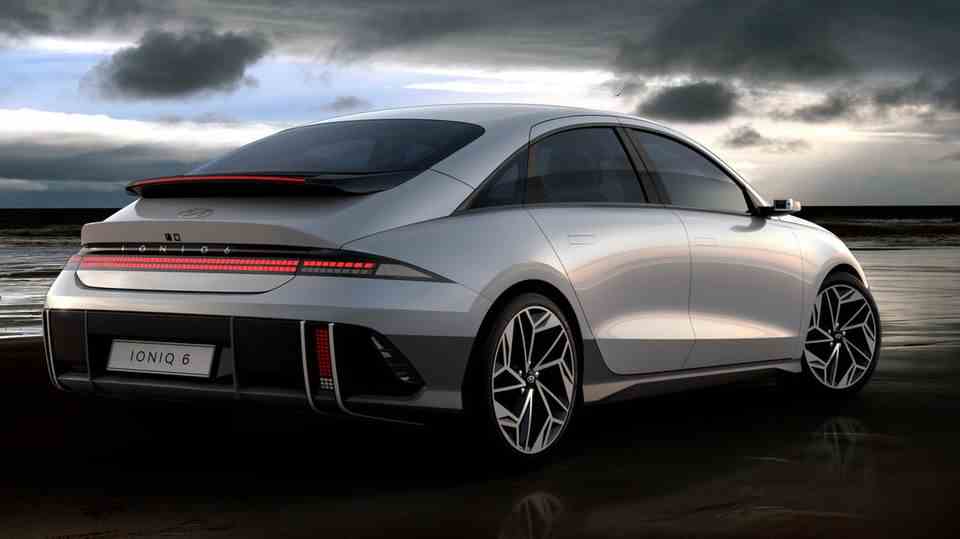energy costs
Driving an electric car is becoming more expensive: what the high electricity prices at the charging stations could mean
For a long time, an electric car was considered very cheap when it came to charging the batteries. However, rising prices are also to be expected at the charging station.
© Simon Skafar / Getty Images
The costs of energy are rising and rising – this is probably also having an effect on electromobility. Experts warn of price explosions, charging station operators are finding planning increasingly difficult.
The course was already clearly recognizable at the beginning of the year: The prices for electricity from charging stations from almost all providers are increasing, and municipal utilities are also increasing the costs for charging electric cars. However, the end of the road has apparently not been reached, as Hildegard Müller, President of the Association of the Automotive Industry (VDA), explained to the television station “Welt”.
Germany cannot supply electric cars alone
Müller said that the association was “concerned” about the electricity costs and that Germany was probably not able to produce the electricity for e-mobility on its own. She demands that the government should deal with trade agreements and energy partnerships quickly and decisively in order to avoid a shortage – and thus inflation.
+++ Also read: Here you will find the best charging prices for your electric car +++
The consequence of too little and too expensive electricity is clear: the difference between the operating costs of combustion engines and electric cars would continue to shrink, and the advantage would be gone after a certain point. And this despite the fact that the tank discount will expire on September 1st and petrol and diesel will also become more expensive for the time being.
An example: According to the manufacturer, a current Golf with the 150 PS hybrid drive (1.5 eTSI OPF, 130 PS) consumes an average of 4.7 liters of Super per 100 kilometers; in the ADAC test it was 6.1 liters. At a price of 1.74 euros, this costs 8.18 or 10.61 euros. An ID.3, on the other hand, consumes around 13 kilowatt hours per 100 kilometers according to Volkswagen, and around 19 kWh according to ADAC.
At a kilowatt hour price of 45 cents, that would be 5.85 or 8.55 euros. Even at a price of 0.55 euros, the price with the test consumption rose to 10.45 euros – and thus very slightly below a comparable combustion engine. So there is not much leeway before the cost of refueling levels out.
EnBW: “A forecast is not possible”
However, nobody really knows how the offers at the columns will develop. At the request of star Germany’s largest charging station operator EnBW replied: “We currently have no plans to adjust our charging tariffs. Of course, we are monitoring developments on the energy markets very closely in the current situation. With a view to the high dynamics on these, a forecast for the future development of charging prices is possible Unfortunately not possible.” Ionity gave an almost identical answer when asked by “Auto Bild”. There it was also said that the situation was being observed and that the price pressure was clearly felt.
The comparison portal Verivox ventures a first look at autumn and winter. There, one expects “numerous electricity price increases in the coming months, which will represent an additional burden for households”. Verivox is not giving the all-clear for the coming year and even anticipates further increases. This not only sets the direction in which commercial offers will probably move, but also affects the operating costs of a domestic charging station, for example.
Udo Sieverding, energy expert at the North Rhine-Westphalia consumer advice center, is also anticipating further tariff adjustments. He explains to Verivox why that could be. According to Sieverding, the price of electricity also depends on natural gas, the cost of which has risen sharply since the Russian invasion of Ukraine and international economic sanctions. That – along with higher carbon prices and higher costs for coal – directly impacts the electricity market.
Not if, but when
A look at the date reveals why coal and gas have such a direct impact on power generation: In autumn and winter, production from photovoltaics falls. If there is still no wind, the “dark calm” threatens. This refers to the time when the number of hours of sunshine falls and at the same time wind turbines produce significantly less electricity due to calm or weak winds. Especially then, fossil fuels continue to play an important role.
Marc Spieker, CFO of the energy supplier Eon, told Verivox that the pressure is on in all markets and the only thing that would differ between the providers would be the timing of the increases for end customers.
Most charging station operators have so far been reluctant to make further increases. Allego announced in early August that it would increase prices by up to 15 percent from September. The reason: energy prices. So what the Eon board of directors predicted for the private customer market should also apply to the charging stations: the only difference is in the timing.
Looking for the best price
In a current overview, the industry portal “Future Moves” contains the cheapest offers for charging electric cars without monthly basic fees. According to this, the “MVV Emotion” app is currently the best option in Germany at 39 cents per kilowatt hour at AC charging stations and 45 cents at DC charging stations. Against the background of the many providers and tariffs, the experts recommend the “Chargeprice” app (iOS/Android), which calculates individual provider recommendations at the charging station.
Sources: NTV, Verivox, Future Moves, allegory, Car picture




